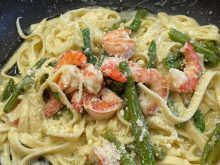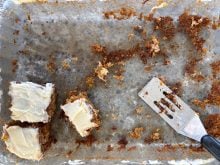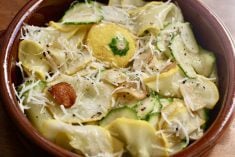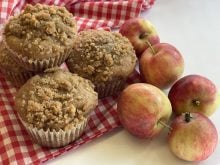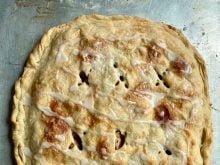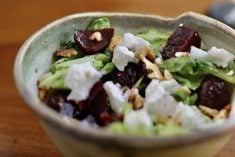When Emmie Oddie retired in 1995, TEAM Resources took over the food and consumer information column. Our group of home economists often said, “it took four of us to do what she had done so well for so long.”
Oddie, who died July 6, was a role model, professor, mentor and friend.
Her columns were read and clipped in our home and as a teen I was excited to attend a meeting with my mother where Oddie spoke.
She was my professor at university, where her office door was always open for questions, discussion and guidance. Her warm, friendly manner was also evident in her columns.
Read Also

Fuel rebate rule change will affect taxes and AgriStability
The federal government recently announced updates to the fuel rebates that farmers have been receiving since 2019-20.
In her memory, I would like to share a few items from her past columns.
In January 1981, a reader was looking for recipes using rye flour and Oddie posted this traditional flat bread from northern Finland and Lapland.
Rieska
- 2 c. rye flour 500 mL or barley flour
- 3/4 tsp. salt 4 mL
- 2 tsp. sugar 10 mL
- 2 tsp. baking powder 10 mL
- 1 c. evaporated milk 250 mLor light cream
- 2 tbsp. butter, melted 30 mL
In a large bowl, stir together flour, salt, sugar and baking powder until well blended. Stir in milk and melted butter until a smooth dough forms.
Turn dough out onto a well buttered baking sheet and with floured hands divide into eight or 10 sections.
Pat individual dough pieces to make four inch (10 cm) circles about 1/2 inch (1 cm) thick. Prick with a fork.
Bake in a preheated 450 F (230 C) oven for 10 minutes or until lightly browned. Serve immediately. Makes eight to 10 rounds.
Note: When I make this recipe, I used a blend of white and rye flour.
In the late 1940s, electricity was coming into many rural homes so selecting and using the new electric appliances was often part of Oddie’s columns.
The deep freeze, a convenient alternative to a freezer plant locker, fostered many questions such as freezing chicken.
Oddie said cold jars were fragile and prone to breaking and the time required to thaw the chicken eliminated the convenience of canned chicken.
A home freezer brought a shift away from home canning to home freezing. Oddie said food needed to be blanched prior to freezing and packaged to prevent freezer burn.
I have enjoyed this salad several times at barbecues. A great make ahead salad for a family gathering.
It serves eight to 10.
Frozen fruit salad
- 2 tsp. unflavoured gelatin 10 mL
- 2 tbsp. cold water 30 mL
- 1 c. mayonnaise 250 mLor salad dressing
- 1/2 – 250g package of 125 gcream cheese
- 1 c. whipping cream, 250 mL whipped
- 2 – 398 mL cans fruit cocktail, drained
- 1 – 398 mL can crushed pineapple, drained
- 1/3 c. maraschino 75 mLcherries, cut in halves
- 1 tbsp. lemon juice 30 mL
To soften the gelatin, mix with cold water in a cup. To dissolve the softened gelatin, place the cup in a pan of hot water, stir to dissolve.
Add the dissolved gelatin to the mayonnaise or salad dressing. Mash the cream cheese with a fork and blend in gradually with the dressing.
Whip the cream and fold into the cream cheese and dressing mixture.
Fold in the fruit and lemon juice.
Freeze in a plastic container or for individual servings, freeze in small moulds or an ice cube tray.
Store in the moulds or remove by thawing the outside edges. Arrange in layers in a rigid container with two pieces of freezer wrap between layers.
To serve: Chill salads in the refrigerator for about three hours for the large bowl or an hour for the individual moulds. Freezer storage time is two to three months.
Note: A food processor speeds the preparation of this salad to combine the cream cheese and salad dressing.
Troubleshooting in pickling season is from a 1968 column. These points are still relevant.
1. Use tested recipes from reliable sources. Look out for ambiguous directions.
2. Use quality ingredients:
Water: soft water is recommended if it is clean and safe. Hard water can contain so many minerals that the acid in the brine does not form properly. Iron in the water will blacken the pickles.
Vinegar: Use vinegar full strength, (pickling vinegar has seven percent acetic acid). Use white vinegar for light coloured food. Use cider vinegar for flavour and aroma.
Salt: Use coarse pickling salt. Iodized salt is not recommended for brining. Salt that contains anti-caking ingredients should not be used since cloudiness may occur in the brine.
Spices: Buy fresh spices. Those carried over may lose flavour. Powdered spices will darken pickles and relishes. Whole spices tied loosely in a cheesecloth bag may be preferable since the bag can be removed after cooking. Have the bag large enough so that the boiling syrup can pass through freely.
Cooking utensils: Use enamel, aluminum or stainless steel. Vinegar and salt react with copper, iron and brass, causing discolouration. Avoid enamel pots that are chipped.
Vegetables: Use only firm fresh fruits and vegetables. Slightly immature cucumbers make the best pickles.
Betty Ann Deobald is a home economist from Rosetown, Sask., and a member of Team Resources. Contact: team@producer.com.


